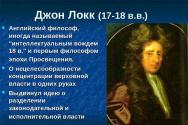Dark pictures. Depression by Goya - "black painting" The great red dragon and the monster from the sea
And “Two Old Men Eat Soup” is very similar in atmosphere and expression to Van Gogh’s “Potato Eaters”.
Highly good quotes you picked up some amazing murals. I like them very much.
Writing directly on the wall is fantastic. I had such an experience, incredible sensations.
Julia Ria:
November 22, 2011 at 12:20
Compared to Van Gogh. Yes, the same gloomy colors, the same atmosphere of suffocation and impotence or something ... I like “Dog” most of all these paintings, such a strange atmosphere was created by Goya.
I don't remember, have you read this book about Feuchtwanger's Goya? It ends just at the place where the artist decided to paint the walls of his house. There should have been a second part, but ... the writer's life was cut short - so unfairly.
:
November 22, 2011 at 13:47
The dog has such a plaintive look, there is so much loneliness, resentment in it, and in front of it there is a barely distinguishable shadow (but it may be the ledges of the wall), at which it looks with the question: “Why did you leave me?” ...
I don't remember if I've read Feuchtwanger's Goya, but that won't stop me from reading this book when the mood is right.
These late works by Goya are pure expressionism. He was very ahead of his time.
:
November 24, 2011 at 18:07
:
November 25, 2011 at 11:30
For a long time I did not accept and rejected conceptual art, various wild, repulsive performances, actions, happenings and the like. In Russia, the term "contemporary art" is accepted, in the rest of the world they don't know about it.))
As an example, the scandalous antics of the most famous Russian artist, the man-dog Oleg Kulik. I really like one of his old works "Russian Eclipse", where he is naked with a red banner in his hand.))
It took me a lot of time reading related literature and articles about contemporary art to start convincing yourself that everything has a place in art. And nothing can be denied.
I didn’t understand better, but I still sometimes wonder what is going on in conceptual (intellectual) art. Read the statements of Oleg Kulik, they deserve it. For example, here is one of his thoughts:
“All are good, but they lie, but the artist does not lie, but he is a greedy and arrogant egoist. All these qualities are also present in the layman, but in modern world it is indecent to show them. The worst thing in the world of the layman is not the atomic bomb, not poverty, but what your neighbors will say about you. The artist is not afraid of this.
Also, I really liked it:
"Art that exists for the sake of sale is no longer art."
So the rejection and rejection I get from commercial art, paintings for sale. But I have been struggling with this “righteous anger” for a long time and quite successfully.))
Julie, what is it that makes you angry?
:
November 25, 2011 at 16:16
And yet I do not quite understand what you mean by commercial art? What is sold in principle or what is drawn deliberately to the taste of the public?
:
November 25, 2011 at 17:37
How can I be against everything that is for sale? I myself have sold more than a dozen paintings. Plus, everything eventually ends up on the art market.
Of course, I mean what is drawn specifically for sale. That is, knowing in advance what the public will buy. For her taste. But I've been sympathetic to this for a long time. After all, people have to live from something. Why not from pictures?
Ol, the intention of the artist is important to me. Primordial. That is what makes the difference between the works. Therefore, we call one picture art, and we don’t call the other.
:
November 25, 2011 at 18:13
Now I understand. Sometimes it seems to me that you are generally against the sale.
:
November 26, 2011 at 12:57 pm
Of course not! I am for it. And I am very glad when artists manage to live from their art. That's great rarity.
In this matter, it is important to understand what is the goal and what is the means.))
:
December 1, 2011 at 13:57
Yes, yes, if you think only about money in the first place, spirituality and meaningfulness are lost. But, the presence of earnings does not negate the existence of meaning. These things are not always clear to everyone. Especially in our country, in Russia. The master must be poor - sits in the minds of many, and if the master is rich - then this is no longer art. The same Goya received a lot of money for his portraits and was a court painter, which he was proud of. But he did not step over himself.
The phrase: “The worst thing in the world of the layman is not the atomic bomb, not poverty, but what the neighbors will say about you” is amazing! Simple but accurate. What will they say about you ... neighbors, colleagues, just passers-by. It is disgusting from all this (however, this, alas, is in me too).
:
December 1, 2011 at 15:20
Of course he doesn't deny it! People get confused, that's right. And to what extent, I can not fit in my head. For example, most people think that any painting is art. Automatically. If there are all the attributes: a canvas covered with paints, a frame, then art. What else? It never ceases to shock me. Julia, why is the word art referred to any painting? Do you have a version?
This “what they will say about you” is painfully familiar to me. Since I always didn’t care, my parents ate the consequences of my indifference to the fullest.))
Among the noble works of art that delight the eye and evoke only positive emotions, there are canvases, to put it mildly, strange and shocking. We present to your attention 20 paintings by world famous artists that make you horrified ...
"Losing mind over matter"
A painting painted in 1973 by the Austrian artist Otto Rapp. He depicted a decomposing human head, put on a bird cage, in which lies a piece of flesh.
"Suspended living Negro"

This gruesome creation by William Blake depicts a Negro slave who was hung from the gallows with a hook threaded through his ribs. The work is based on the story of the Dutch soldier Steadman - an eyewitness to such a cruel massacre.
"Dante and Virgil in Hell"

Adolphe William Bouguereau's painting was inspired by a short scene about a battle between two damned souls from Dante's Inferno.
"Hell"

The painting "Hell" by the German artist Hans Memling, written in 1485, is one of the most terrible artistic creations of its time. She was supposed to push people towards virtue. Memling heightened the scene's horrific effect by adding the caption, "There is no redemption in hell."
"The Great Red Dragon and the Sea Monster"

Famous English poet and artist of the 13th century William Blake in a moment of insight, he created a series of watercolor paintings depicting the great red dragon from the Book of Revelations. The Red Dragon was the embodiment of the devil.
"Water Spirit"

The artist Alfred Kubin is considered the largest representative of Symbolism and Expressionism and is known for his dark symbolic fantasies. “The Spirit of Water” is one of these works, depicting the powerlessness of man in the face of the sea.
"Necronom IV"

This is a terrible creation. famous artist Hans Rudolf Giger was inspired by the movie Alien. Giger suffered from nightmares and all his paintings were inspired by these visions.
"Flaying Marsyas"

Created by the Italian Renaissance artist Titian, the painting "The Flaying of Marsyas" is currently in National Museum in Kroměříž in the Czech Republic. Piece of art depicts a scene from Greek mythology where the satyr Marsyas is flayed for daring to challenge the god Apollo.
"The Temptation of Saint Anthony"

Matthias Grunewald portrayed the religious scenes of the Middle Ages, although he himself lived during the Renaissance. Saint Anthony was said to have faced trials of his faith while praying in the wilderness. According to legend, he was killed by demons in a cave, then he resurrected and destroyed them. This painting depicts Saint Anthony being attacked by demons.
"Severed Heads"

The most notable work Théodore Géricault is The Raft of the Medusa, a huge painting painted in a romantic style. Gericault tried to break the boundaries of classicism by moving to romanticism. These paintings were the initial stage of his work. For his work, he used real limbs and heads, which he found in morgues and laboratories.
"Scream"

This most famous painting by the Norwegian expressionist Edvard Munch was inspired by a serene evening walk, during which the artist witnessed the blood-red setting sun.
"Death of Marat"

Jean-Paul Marat was one of the leaders French Revolution. Suffering from a skin disease, he spent most of his time in the bathroom, where he worked on his recordings. There he was killed by Charlotte Corday. The death of Marat has been depicted several times, but it is the work of Edvard Munch that is particularly cruel.
"Still life of masks"

Emil Nolde was one of the early expressionist painters, although his fame was overshadowed by others such as Munch. Nolde painted this painting after studying masks in the Berlin Museum. Throughout his life he has been fascinated by other cultures and this work is no exception.
"Gallowgate Lard"

This painting is nothing more than a self-portrait by Scottish author Ken Currie, who specializes in dark, socially realistic paintings. Curry's favorite subject is the drab urban life of the Scottish working class.
"Saturn Devouring His Son"

One of the most famous and sinister works of the Spanish artist Francisco Goya was painted on his house wall in 1820-1823. The plot is based on Greek myth about the titan Chronos (in Rome - Saturn), who feared that he would be overthrown by one of his children and ate them immediately after birth.
"Judith Killing Holofernes"

The execution of Holofernes was portrayed by such great artists as Donatello, Sandro Botticelli, Giorgione, Gentileschi, Lucas Cranach the Elder and many others. The painting by Caravaggio, painted in 1599, depicts the most dramatic moment of this story - the decapitation.
"Nightmare"

The painting by the Swiss painter Heinrich Fuseli was first shown at the annual exhibition of the Royal Academy in London in 1782, where it shocked both visitors and critics.
"Massacre of the innocents"

This outstanding work of art by Peter Paul Rubens, consisting of two paintings, was created in 1612, believed to have been influenced by the work of the famous Italian painter Caravaggio.
"Study of the portrait of Innocent X Velasquez"

This terrifying image of one of the most influential artists of the twentieth century, Francis Bacon, is based on a paraphrase famous portrait Pope Innocent X by Diego Velasquez. Spattered with blood, with a painfully distorted face, the Pope is depicted seated in a metal tubular structure, which, upon closer inspection, is a throne.
"The Garden of Earthly Delights"

This is the most famous and frightening triptych of Hieronymus Bosch. To date, there are many interpretations of the painting, but none of them has been conclusively confirmed. Perhaps Bosch's work represents the Garden of Eden, the Garden of Earthly Delights and the Punishment that will have to be suffered for mortal sins committed during life.
Are you used to getting aesthetic pleasure and pleasure from works of art? But the world of painting can not only surprise you, but also scare you. Over the centuries, great artists have created outstanding canvases that will make viewers' hair stand on end.
You do not experience unpleasant excitement at the sight of "Scream"? Or is there another painted "horror story" that is imprinted in your memory? Artifex I picked up for you 10 paintings that you definitely shouldn’t look at before going to bed.
10. Caravaggio, Judith and Holofernes, 1599
The top opens with a realistic painting by an Italian master based on the Old Testament "Book of Judith". The legend of a girl who, for the sake of her people, went to the camp of the enemy, won the trust of the commander Holofernes and cut off his head at night, worried artists all over Europe for a long time. Usually she was depicted with a severed head in her hand in the middle of a camp of enemies, but Caravaggio decided to reflect the very moment of the murder. Thanks to this decision, the artist conveyed not only the atmosphere of bloodshed, but also the emotions of the killer and the victim.
9. Bouguereau, Dante and Virgil in Hell, 1850

The 19th-century French artist Adolphe William Bouguereau was very fond of Dante's poem " The Divine Comedy". The artist depicted a scene from the XXXth song of the part of the poem called "Hell". On the eighth circle of the underworld, the protagonists watch as two damned souls torment the deceiver. Bouguereau worked for a long time on color palette paintings and studied the aesthetic limits of man. The painting, as conceived by the artist, was supposed to convey fear and horror from what is happening in underworld. At the Salon of 1850, this work was disgusted by the public.

The famous triptych is still fraught with many mysteries for researchers. None of the interpretations of the work that exists today is not recognized as exhaustive. The triptych showed the fullness of the artist's imagination and skill. It is dedicated to the sin of voluptuousness, and all three parts reflect main idea Bosch down to the smallest detail. On the outer wings of the triptych, a serene picture of the universe is depicted, but when you open them, you plunge into the atmosphere of insane chaos.
7. Munch, The Death of Marat, 1907

Do not confuse this painting with the majestic work of the same name, which has become a kind of symbol of the French Revolution. Edvard Munch painted his canvas 114 years after David, and focused not on the figure of a revolutionary publicist, but on the moment of his assassination. In his inimitable manner, the author of The Scream depicts a naked Charlotte Corday a moment after she brutally stabbed Marat. Pumping strokes and an abundance of blood complement the frightening effect of the picture.
6. Blake, The Great Red Dragon and the Sea Monster, 1806-1809

Deservedly considered one of the most mysterious English artists and engravers. Since childhood, this painter was tormented by ghosts and visions, later he depicted them in his works. Blake dedicated a series of paintings to the Red Dragon from The Revelation of John the Evangelist. In this picture, the dragon personifies Satan, towering over another demon - a sea monster. The epic and detailed study of monsters not only frighten, but also cause admiration.
5. Bacon, "Study of the portrait of Innocent X Velazquez", 1953

The work is a rethinking of the "Portrait of Pope Innocent X". The classic of English expressionism painted about 40 such paintings, included in the Screaming Popes series. The artist changed the color of the dad's clothes from red to purple and painted the entire canvas in dark colors. Thanks to the master's technique, the work does not evoke associations with the original portrait of Velazquez, but it makes a frightening and depressing impression.
4. Dali, "The Face of War", 1940

This painting by the famous Spanish artist is capable of causing a panic attack in the viewer. Salvador Dali plays not only with symbols, but also with the transfer of mood. The design of a head wrapped in snakes, ever-shrinking skulls in the eye sockets of what was once a man, symbolizes an endless cycle of death. In the lower right corner, the artist "left" the imprint of his hand. And the desert and yellow tones typical of Dali's work give this picture a touch of paranoid madness.
3. Goya, "Saturn devouring his son", 1819-1823

Some engravings can scare even an adult. Among them is the interpretation of the plot from ancient Greek mythology, where the titan Kronos devours his children in fear of being overthrown by one of them, seems to be the most creepy. Goya depicted madness on the face of an already ugly monster, which further thickens the atmosphere of horror of what is happening. This work "decorated" the wall in his "House of the Deaf", but hardly anyone else would want to pass by such a picture in their house at night.
2. Curry, Gallowgate Lard, 1995

Artist Ken Curry was born in England in 1960. His gloomy canvases reflect the processes taking place in the modern world. Curry's paintings affect the viewer's psyche, create a sense of hopelessness and fear in him, but at the same time push him to think. An eerie self-portrait of the artist is the fruit of his reflections on the metaphysical issues associated with decomposition modern society and human consciousness.
1. Rapp, Losing Mind to Matter, 1973

Even glancing at the painting by the Austrian artist Otto Rapp, you want to immediately look away. A decomposing human head on a bird cage, an untouched tongue inside it - such a "still life" strains not only the psyche of the audience, but also causes purely physiological discomfort. One can guess what meaning the artist put into the work, but it is quite obvious - this is a truly frightening picture! And if someone dreams of a similar plot at night, then Rapp's masterful technique should be "thanked" for the nightmare.
October 18, 2012
Saturn devouring his children
1821-1823; 146x83 cm
Prado, Madrid
Goya spent the years before emigrating to France near Madrid on the banks of the Manzanares, in a house called the "House of the Deaf". The wall paintings of this house, portraits, several paintings for churches and the graphic series "Disparates" (in translation - absurdity, follies) are among the later creations of the master.
In paintings made by technique oil painting on the walls of the "House of the Deaf", they most often see fantastic, monstrous images generated by the morbid imagination of an old artist, not only deaf, but also beginning to go blind, for whom the whole world has turned into gloomy tragic nightmares.
However, at present, a connection has been established between the murals and the political events of those years, although the clearly expressed element of fantasy really makes the dependence of the depicted on real events difficult to perceive. The true meaning of these works is encrypted and is closely connected with popular beliefs, but the tragic grotesque in these so-called "Black Canvases" is brought to the limit...

Two old women eating soup
1821-1823; 53x85 cm
wall painting transferred to canvas
Prado, Madrid
The master's palette at this time consists mainly of black, gray, ocher and brown; only sometimes he unexpectedly intersperses white or blood-red spots into this rather gloomy color. Under late XIX century, "Black Canvases" will be transferred from the walls of the "House of the Deaf" to the canvas. The house itself, in which, by the way, the Goya Museum was never created, was finally destroyed in 1910. Today, in its place is the metro station, which bears the name of the artist - "Goya"...
In the famous "Saturn Devouring His Children", the cannibal god, resembling a bird of prey with bulging eyes, is depicted at the most terrifying moment, his open mouth evokes associations with the gates of hell, behind which his children perish one by one in terrible agony.. .

Draka ("Two Foreigners")
1820-1823; 123x266 cm
wall painting transferred to canvas
Prado, Madrid
Rubens addressed the same theme in 1636, but presented it in a completely different way, although using a similar composition. Rubens makes the viewer perceive Saturn somewhat detached, as if from the outside. Goya, on the other hand, makes us unwitting participants in an infernal feast - just like he invites us to join two old witches who are having a meal (“Two Old Women Eating Soup”).
"House of the Deaf"
In 1819, Francisco Goya, who by that time had almost completely lost his hearing, was looking for a house in the suburbs of Madrid. The well-known "House of the Deaf" suited him perfectly - earlier Antonio Montañez lived in it, who also did not hear anything. Having moved to a new house, Goya found himself all alone. Leocadia Weiss, if she was with him, could not serve him with a worthy company.
The artist painted the walls of the rooms with oil, a total of 14 works, originally oil frescoes, later transferred to canvases. These are thrilling stories, close to those that appeared on his etchings of that time. Paintings created in 1820-1823 were called "Black Paintings". In parallel, he created a series of etchings Los disparates - "Disparates" ("Fads" or "Follies") - 22 sheets were published in 1863 in Madrid under the title Los Proverbios ("Proverbs", "Proverbs").
The ghosts that inhabited the soul of Goya broke free.
Perhaps the most famous and most terrible picture of the "black" series is "Saturn devouring his children." Here Goya uses the myth of the father of Jupiter (Zeus) Saturn (Kronos) as an allegory of the events that took place in the world. No wonder the ancient titan looks like a distraught maniac-cannibal in Goya. “Two old men eating soup” seem no less scary: these are two skeletons covered in leather and covered with rags. "Coven. The Great Goat” is an image of a satanic black mass on the eve of Easter and Christmas. "Atropos" ("Fate") - the flight of the three ancient Hellenic goddesses of fate Moir, who are about to end someone's life. “Two Old Men” (“The Old Man and the Monk”) is a contrast between dignified and ugly old age. "Duel with clubs" - perhaps an image of the duel of the biblical Cain and Abel. "Reading men" - it would seem, nothing special, if not for the expression of stupidity on their faces. "Judith and Holofernes" - no nobility in the person of the biblical heroine Judith, only a thirst for blood for the sake of blood. "Festival in San Isidoro" - the joy of the freaks depicted here seems to defile the earth. Laughing Women is the same frightening, impenetrable stupidity. "Pilgrimage to the source of San Isidoro" - what a terrible contrast to the old painting "Meadow at San Isidoro"! “Dog” is the terrible loneliness of a small creature in a terrible, devoid of warmth and peace in the world. "Dona Leocadia Zorrilla" - the lady on the canvas is somewhat reminiscent of the late Duchess of Alba. "Fantastic visions" ("Asmodeus") - the flight of a demon over the mountains.
“Father, working for himself, painted whatever he pleased, and at the same time he used not a brush, but a knife, but at a certain distance this painting made an amazing impression,” wrote the artist’s son. And in this technique (etching, engraving) Goya was also ahead of his time - by several decades.
This text is an introductory piece.








